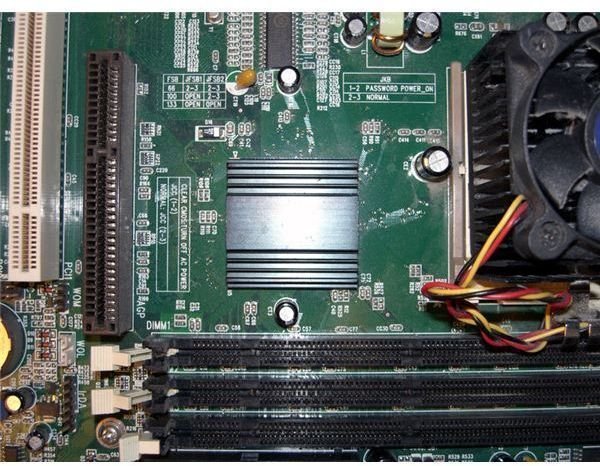Understanding the Motherboard North Bridge
North Bridge Operation
The motherboard north bridge coordinates the interface between the system CPU, system memory, the graphics bus, and the
motherboard south bridge. The handling of these tasks compliments the processing power of the CPU and contributes to the operating efficiency of the entire system. Some modern CPUs have eliminated the need for the motherboard south bridge by integrating its functions into the north bridge in the Intel hub architecture, improving the overall efficiency of the system.
Because of the unique way the motherboard interacts with the CPU, memory, and graphics bus, most chips are only compatible with a limited number of CPU models and memory and bus configurations. This usually means that the advent of a new CPU requires the simultaneous development of a new motherboard chipset. Because of this, it is possible for some CPU chips to be delayed in release to motherboard makers while the manufacturer works on completing development and production the north bridge.
Unlike the north bridge, the motherboard south bridge traditionally does not connect directly to the CPU. Because the speed of I/O functions on the motherboard is not as sensitive to the operation of the computer as is the speed of the memory and graphics buses, the south bridge is usually located farther away from the CPU, to the “south” of the PCI bus, leaving the area closer to the CPU for the north bridge and supporting components.
Because of the operating speed of the north bridge, the chip usually generates a lot of heat while in operation, often requiring that a dedicated heat sink and sometimes a fan, be affixed to it to ensure safe operation. The heat sink and its proximity to the CPU make the motherboard north bridge fairly easy to identify.
Image Credit: Wikimedia Commons/Rosco
Redefining North Bridge
Some of the latest high performance CPUs on the market no longer use a motherboard north bridge built onto an external chip. This improves efficiency by integrating memory and graphics control with the CPU on the same die. This new architecture is found on chips such as the Intel Core i7 and Core i5 processors and others made by Intel and AMD, allowing for a much faster integration. The integration of the north bridge with the CPU also eliminates the need for the front side bus, enabling hyperthreading technology to further enhance performance. Although the motherboard north bridge has been assimilated into the system CPU, the functions of the north bridge are alive and well.
The new integrated architecture of the CPU, however, has forced some players in the technology market to adapt to their new environment. With so much of the graphics processing now handled on the CPU itself, chipmakers like Nvidia have faced new competition in the market that has forced them to evolve. While Nvidia has - in effect - been locked out of the latest new Intel architecture, it continues to develop chipsets that work with AMD processors. Also, Nvidia plans to continue working with the Intel Atom platform while expanding its role in the ultra mobile market with its Tegra “system on a chip” solutions. Nvidia has also been increasingly involved in the supercomputing world, namely the latest supercomputers in Oak Ridge, TN and in China.
